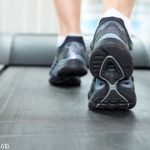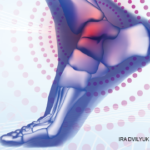“We seem to have matched the impairment with our treatment strategy to get good results,” Dr. Rao said.
The full-length carbon graphite orthoses also reduced regional loading in patients with midfoot osteoarthritis, the researchers found.6 These results suggest an additional mechanism for pain relief, she said.
Dr. Rao called Dr. Hillstrom’s biomechanical testing methods “state-of-the-art.”
In the last 10 years, there has been a boom of studies looking at the population burden of foot pain. Foot pain is a significant burden across various populations.
Central to his research is developing, validating, and applying quantitative measures of foot structure and foot function, Dr. Hillstrom stated. In his laboratory, assessment of foot structure (low, normal, or high arch and tendency towards overpronation or supination) includes arch height and flexibility measured from both sitting and standing positions, as well as hindfoot alignment. For foot function, they measure barefoot plantar pressure and pronation of the foot and ankle during gait. To do so, the investigators use the Center of Pressure Excursion Index, which Dr. Hillstrom codeveloped with Jinsup Song, DPM, PhD, at Temple University School of Podiatric Medicine in Philadelphia, Pa.
Their research shows biomechanical differences in peak pressure measurements depending on arch height. Flat-footed patients overload the medial structures of the foot more than people with other foot types, according to Dr. Hillstrom.
“It’s clear that the structure and function of human feet are different, and foot function is foot structure dependent,” he said.
The Foot’s Role in Other Pathology
Foot problems are a concern for rheumatology health professionals because osteoarthritis and autoimmune disorders are common reasons for foot pain. The foot also may play an accommodative role in pathology elsewhere in the body, such as knee osteoarthritis, according to Dr. Hillstrom.
In an interview with The Rheumatologist, session moderator Mary T. Wright, OT, stressed the importance of this research showing a correlation between back, hip, and knee pain and the foot.
“Often, clinicians do not evaluate the foot when there is pain in these other areas,” said Wright, an occupational therapist at ProMedica Toledo Hospital, Toledo, Ohio.
The information presented about footwear showed the therapeutic challenges for clinicians, she adds, noting that “there probably is not a right shoe or right orthotic for everyone.”
The Arthritis Foundation and the American Orthopaedic Foot and Ankle Society supported Dr. Rao’s research, and the National Institutes of Health funded work by Drs. Hillstrom and Hannan.



